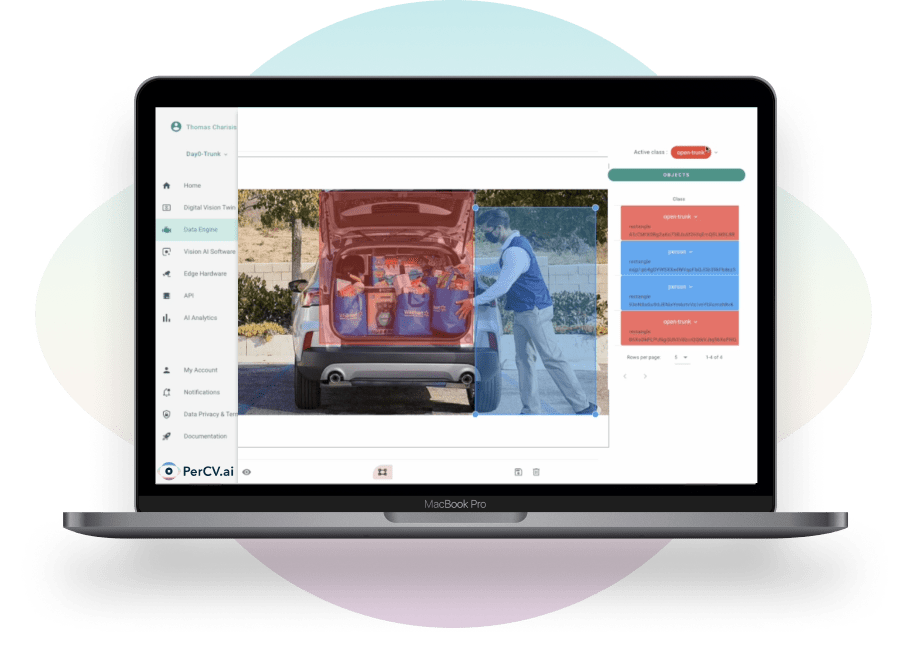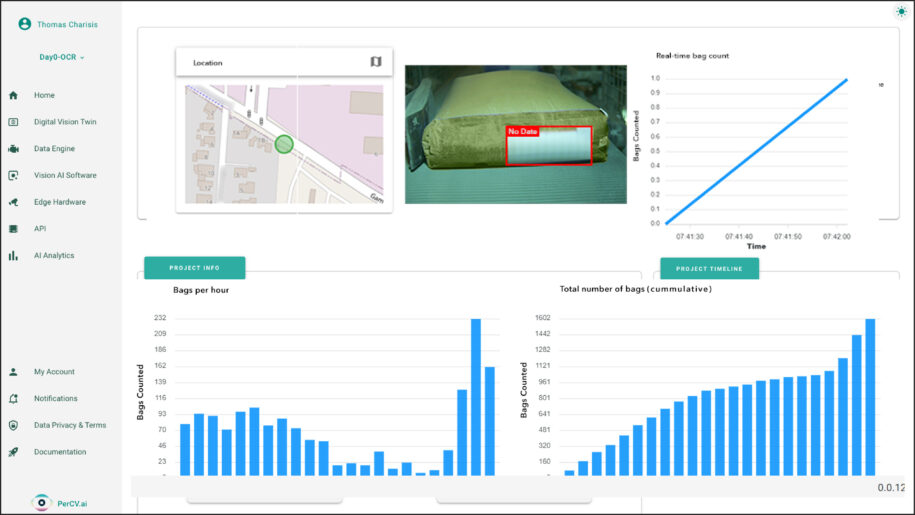Computer Vision AI platforms offer a streamlined way to harness the power of visual data. They speed up the Vision AI adoption, simplifying complex tasks, freeing up resources and letting organisations focus on solving real-life-problems. By exploring this guide, you’ll gain insights into how these platforms can transform your operations. Ready to dive in?
Understanding Computer Vision AI Platforms
Vision AI Is More Than AI Models
In today’s dynamic digital landscape, Computer Vision AI has emerged as a powerful and transformative technology. Its applications have the capacity to reshape industries and transform urban living. However, amidst the promise of Computer Vision AI, a recent McKinsey & Company study revealed a formidable challenge: a substantial 74% of respondents struggled to advance beyond the initial prototype stage in their Vision AI endeavors. This challenge underscores the intricacies of deploying Computer Vision AI at scale and emphasizes the need for a robust infrastructure and comprehensive strategy to harness its full potential.
74% of vision AI projects do not scale
McKinsey & Company, "The state of AI 2023" (January 2023)
This challenge also highlights the complexity of deploying Computer Vision AI at scale. Whether you’re looking to deploy it on two devices or a vast network of 2000, the difficulties remain consistent. It’s not just about building the technology; it’s about orchestrating an entire ecosystem for seamless integration.
This blog post delves into the world of Computer Vision AI platforms, exploring their scope, relevance, and the challenges and opportunities they present to innovation, digitization, and digital transformation managers. We’ll analyze real-world cases, share best practices, and equip you with insights to navigate the complexities of Computer Vision AI effectively. Let’s begin this journey and unlock the potential of Computer Vision AI.
The Vital Components of Computer Vision AI
Computer Vision AI platforms are equipped with fundamental components that lay the groundwork for their transformative potential. To deploy a Vision AI solution effectively and solve real-life challenges, it’s essential to understand these core features and their role in a structured deployment process.
Core Features
Image and Video Processing
These platforms excel in rapidly and accurately processing extensive visual data. This capability is pivotal for analyzing images and videos in diverse scenarios.
Deep Learning
Rooted in neural networks, Computer Vision AI platforms possess the capacity to learn and adapt, continuously enhancing their accuracy and performance.
Pre-trained Models
Many platforms come equipped with pre-trained models tailored for various tasks. This feature significantly reduces the need for extensive training datasets and accelerates deployment.
Scalability
Designed to scale seamlessly, these platforms facilitate the deployment of Vision AI across a multitude of devices and scenarios, ensuring adaptability and versatility.
The Vision AI Product Roadmap
The typical Vision AI development lifecycle involves multiple steps in a complex and fragmented ecosystem.

Problem Formulation
The journey begins by defining a clear and specific business case. Identify the problem you aim to solve with Vision AI, whether it’s automating quality control in manufacturing or enhancing security in retail.
Data Management
Collect and curate high-quality data relevant to your business case. This data will serve as the foundation for training and validating your Vision AI model.
AI Models
Develop or configure the Vision AI model, leveraging the capabilities of Computer Vision AI platforms. Train the model using your curated dataset, fine-tuning it for your specific application.
Edge Hardware
Procure and install the edge hardware that best meets your requirements. Manage the edge hardware, connect IoT devices, cameras and vision sensor. Deploy sensors at the field and start model testing.
Deploy, Validate, Iterate
Deploy the Vision AI solution in your real-life context. Continuously validate its performance, making necessary adjustments and improvements. Iteration is a key element in refining the solution.
Scale Up Product
Once you have a validated and effective Vision AI solution, consider scaling it up to cover a broader scope or deploy it across multiple locations or devices, depending on your business needs.
This structured approach ensures that your Vision AI solution not only harnesses the core capabilities of the platforms but also aligns with your organization’s strategic goals. As you embark on this journey, keep in mind that each step is critical to the success of your Vision AI deployment, from defining the problem to scaling up the solution for maximum impact.
Benefits of Using Computer Vision AI Platforms
The adoption of Computer Vision AI platforms brings a multitude of advantages to the forefront, particularly when it comes to addressing the challenges posed by the fragmented and resource-intensive ecosystem of computer vision-based AIoT (Artificial Intelligence of Things) sensors and solutions.
1. Integration of Building Blocks:
Computer Vision AI platforms act as the linchpin that consolidates all the essential building blocks necessary for the seamless operation of computer vision-based AIoT sensors and solutions. These platforms provide a unified framework, streamlining the integration of hardware, software, and analytics into a cohesive ecosystem. This integration reduces complexity and accelerates deployment, making it significantly more efficient.
2. Fragmented Ecosystem Solutions:
The current landscape of computer vision-based AIoT solutions is marked by fragmentation. A plethora of hardware, software, and data components exist, each with its own intricacies and requirements. This fragmentation necessitates substantial resources and time investments to piece together a functioning solution. Moreover, the process demands a deep well of expertise in various domains, from computer vision and machine learning to IoT hardware and software development.
3. Resource Efficiency:
By leveraging Computer Vision AI platforms, organizations can circumvent the resource-heavy and time-consuming process of cobbling together a solution from disparate elements. These platforms offer a comprehensive suite of tools and services that cover everything from data ingestion and model training to real-time processing and analytics. This resource efficiency translates into significant cost savings and a faster time-to-market for AIoT solutions.
4. Expertise Accessibility:
The demand for expertise in multiple domains, which is characteristic of the fragmented ecosystem, is a substantial barrier for many organizations. Computer Vision AI platforms provide a bridge by abstracting many technical complexities. This accessibility to expertise allows organizations to focus on their specific application, rather than wrestling with the intricacies of the underlying technology stack.
5. Scalability and Future-proofing:
With a solid foundation provided by Computer Vision AI platforms, organizations can scale their AIoT solutions more effectively. These platforms often offer scalability options, allowing solutions to grow seamlessly with changing demands. Furthermore, they are equipped to adapt to future technological advancements, ensuring that investments remain relevant and future-proof.
In the face of a fragmented ecosystem, Computer Vision AI platforms emerge as a unifying force, simplifying the deployment of AIoT sensors and solutions. They streamline processes, reduce resource overhead, and grant access to the expertise required for success. By embracing these platforms, organizations can expedite their journey towards implementing computer vision-based AIoT solutions, unleashing the potential for innovation, digitization, and digital transformation across various industries.
Implementing Computer Vision AI Platforms
Implementing Computer Vision AI platforms requires a systematic approach to ensure a seamless integration into existing systems and applications. Below, we’ll outline the steps for implementation and provide best practices for a successful transition.
Start by defining clear objectives for implementing Computer Vision AI platforms. What specific problems or opportunities do you aim to address? Having a well-defined scope is crucial.
Analyze the data requirements for your project. Identify the sources of data, their formats, and quality. Adequate and relevant data is fundamental for training and validation.
Select a Computer Vision AI platform that aligns with your project’s objectives and technical requirements. Consider factors such as scalability, compatibility, and ease of use.
Clean and preprocess your data to ensure it’s ready for training. This step includes tasks like data augmentation, normalization, and labeling for supervised learning.
Build or configure your Computer Vision AI model based on the platform’s capabilities. Fine-tune the model using your prepared data.
Develop a comprehensive integration plan. Consider how the Computer Vision AI platform will interact with existing systems and applications, including data flow and API integration.
Utilize the platform’s APIs to seamlessly integrate Computer Vision AI capabilities into your existing systems. Ensure that data can flow smoothly between components.
Thoroughly test the integrated solution to ensure it meets your objectives. Validate the accuracy and performance of the Computer Vision AI model.
Implement a robust monitoring system to keep track of the AI solution’s performance. Regularly update and retrain the model to adapt to changing data patterns.
In the face of a fragmented ecosystem, Computer Vision AI platforms emerge as a unifying force, simplifying the deployment of AIoT sensors and solutions. They streamline processes, reduce resource overhead, and grant access to the expertise required for success. By embracing these platforms, organizations can expedite their journey towards implementing computer vision-based AIoT solutions, unleashing the potential for innovation, digitization, and digital transformation across various industries.
Use Cases and Success Stories
Automated Quality Control In The Cement Industry
Collaborating with Barler AG, we successfully deployed a Vision AI Packaging Integrity & QA solution that replaces manual inspection work at a leading Cement Industry production line. With the help of AI Computer Vision, cement factories are able to reduce their defects, improve their efficiency, and reduce labor costs.
Vehicle Traffic Flow Monitoring
This Vision AI Sensor for Smart Cities & Spaces, built in partnership with Renesas Electronics, is a plug-n-play Edge AI hardware & software solution. Powered by PerCV.ai Smart Cities Suite, the solution supports traffic monitoring, citizen flow monitoring and smart parking applications, coming with an intuitive dashboard for data visualisation, AI analytics and connectivity to 3rd-party apps. .
In conclusion, the world of Computer Vision AI platforms is a gateway to a future of innovation, efficiency, and transformative change. Through this guide, you’ve gained insights into the power of these platforms in simplifying complex tasks, improving decision-making, and enhancing efficiency within your organization.
Now, it’s time to take action. Explore the possibilities, dive into the realm of Computer Vision AI platforms, and embark on a journey to digital transformation. Irida Labs’ Vision AI Platform, PerCV.ai (called “Perceive AI”) is a game-changing Computer Vision AI Platform that streamlines the entire modern computer vision product development workflow, offering end-to-end support from ideation to prototyping and scale-up deployments. Optical quality inspection on production lines, warehouse tracking and monitoring, laser / thermal process monitoring, vehicle tracking and counting, people free-flow monitoring, ANPR, QR code, gauge reading, are some example applications of PerCV.ai Industry 4.0 and Smart Cities & Spaces Suites.
Should you have any questions, require further consultation, or seek assistance in implementing Computer Vision AI, please don’t hesitate to reach out. Contact us at cnd_irida [at] iridalabs.com or through our contact form for personalized guidance and expert assistance. The future of innovation and transformation begins here!
End-to-end Software & Services Platform
To Deploy Computer Vision & AI at Scale


